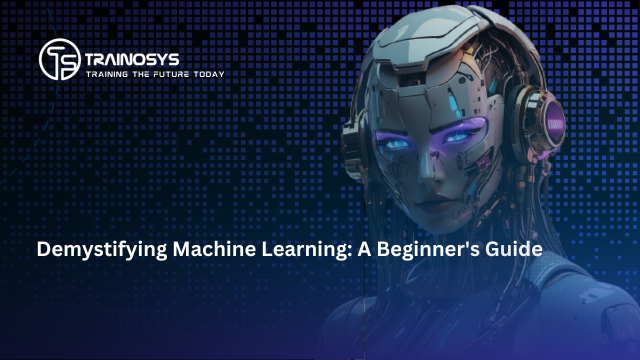In today’s data-driven world, the ability to extract meaningful insights from vast amounts of information is paramount to success. Enter machine learning – a transformative technology that enables computers to learn from data and make predictions or decisions without being explicitly programmed. In this blog post, we’ll explore the fascinating world of machine learning, its applications across various industries, and how you can leverage its power to drive innovation and growth in your organization.
Understanding Machine Learning
At its core, machine learning is about creating algorithms that can learn from data to identify patterns, make predictions, and generate insights. These algorithms are trained on historical data, which allows them to generalize and make accurate predictions on new, unseen data. Machine learning algorithms can be broadly categorized into three types:
- Supervised Learning: In supervised learning, the algorithm is trained on labeled data, where each data point is associated with a target variable. The algorithm learns to map input data to the correct output based on the training examples provided.
- Unsupervised Learning: Unsupervised learning involves training algorithms on unlabeled data, where the goal is to discover hidden patterns or structures within the data. These algorithms can be used for tasks such as clustering, dimensionality reduction, and anomaly detection.
- Reinforcement Learning: Reinforcement learning is a type of machine learning where an agent learns to interact with an environment by taking actions to maximize a reward. The agent learns through trial and error, adjusting its actions based on feedback from the environment.
Applications of Machine Learning
Machine learning has applications across a wide range of industries, including:
- Finance: Predictive modeling for credit scoring, fraud detection, and algorithmic trading.
- Healthcare: Disease diagnosis, personalized treatment plans, and drug discovery.
- E-commerce: Recommendation systems, customer segmentation, and predictive analytics for demand forecasting.
- Manufacturing: Predictive maintenance, quality control, and supply chain optimization.
- Marketing: Customer segmentation, sentiment analysis, and personalized marketing campaigns.
Leveraging Machine Learning in Your Organization
To harness the power of machine learning in your organization, consider the following steps:
- Identify Use Cases: Start by identifying areas where machine learning can provide the most value, such as improving operational efficiency, enhancing customer experiences, or optimizing decision-making processes.
- Data Collection and Preparation: Gather relevant data from internal and external sources and prepare it for analysis. This may involve cleaning, preprocessing, and transforming the data to make it suitable for machine learning algorithms.
- Model Development: Choose appropriate machine learning algorithms and techniques based on the specific use case and data characteristics. Train the model on historical data and evaluate its performance using validation techniques.
- Deployment and Monitoring: Deploy the trained model into production and monitor its performance over time. Continuously collect feedback and retrain the model as needed to ensure optimal performance.
Conclusion
Machine learning holds the key to unlocking valuable insights from data and driving innovation across industries. By understanding the fundamentals of machine learning and leveraging its power effectively, organizations can gain a competitive edge and unlock new opportunities for growth and success. Whether you’re a seasoned data scientist or just starting your journey into the world of machine learning, there’s never been a better time to explore the possibilities that this transformative technology has to offer.


